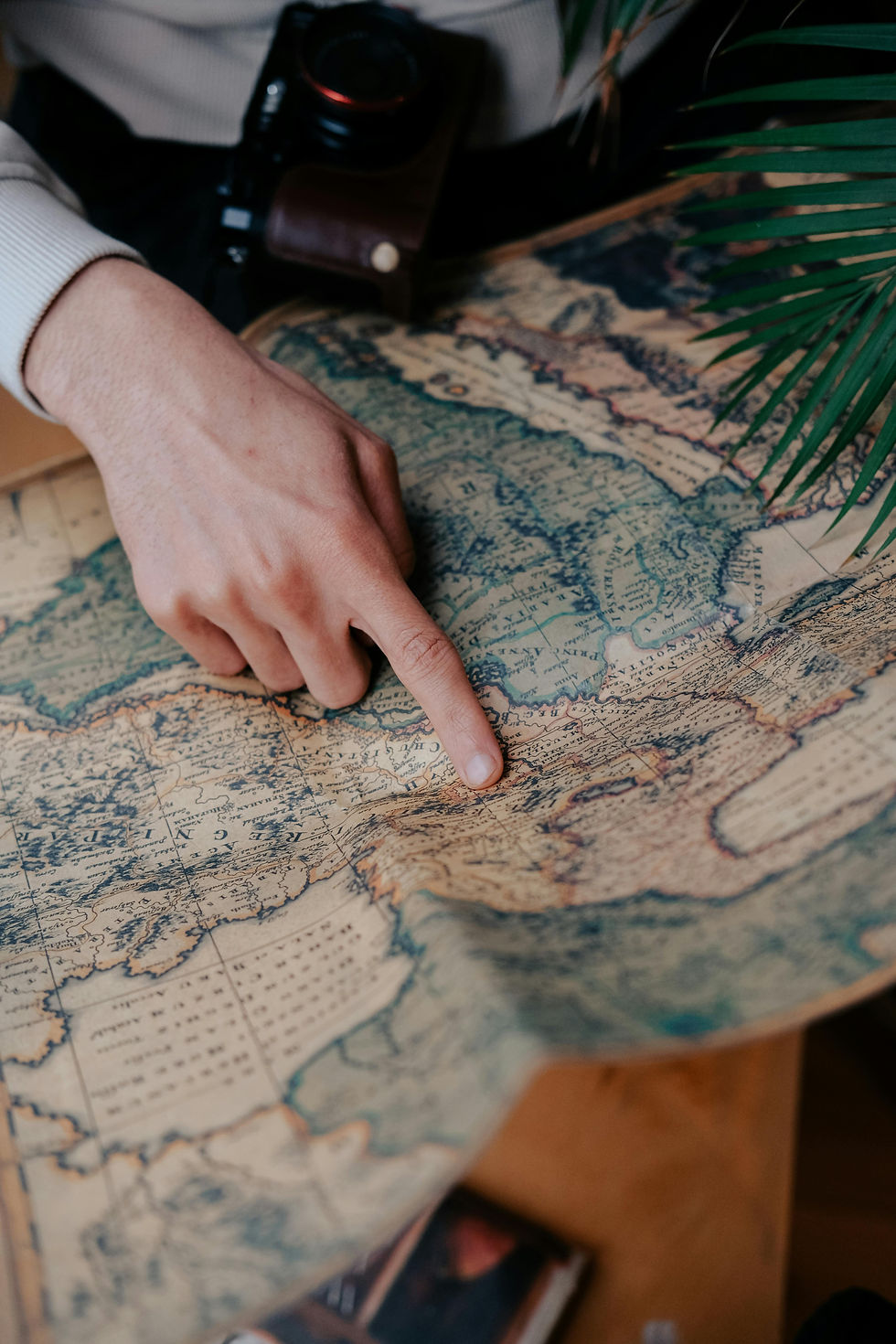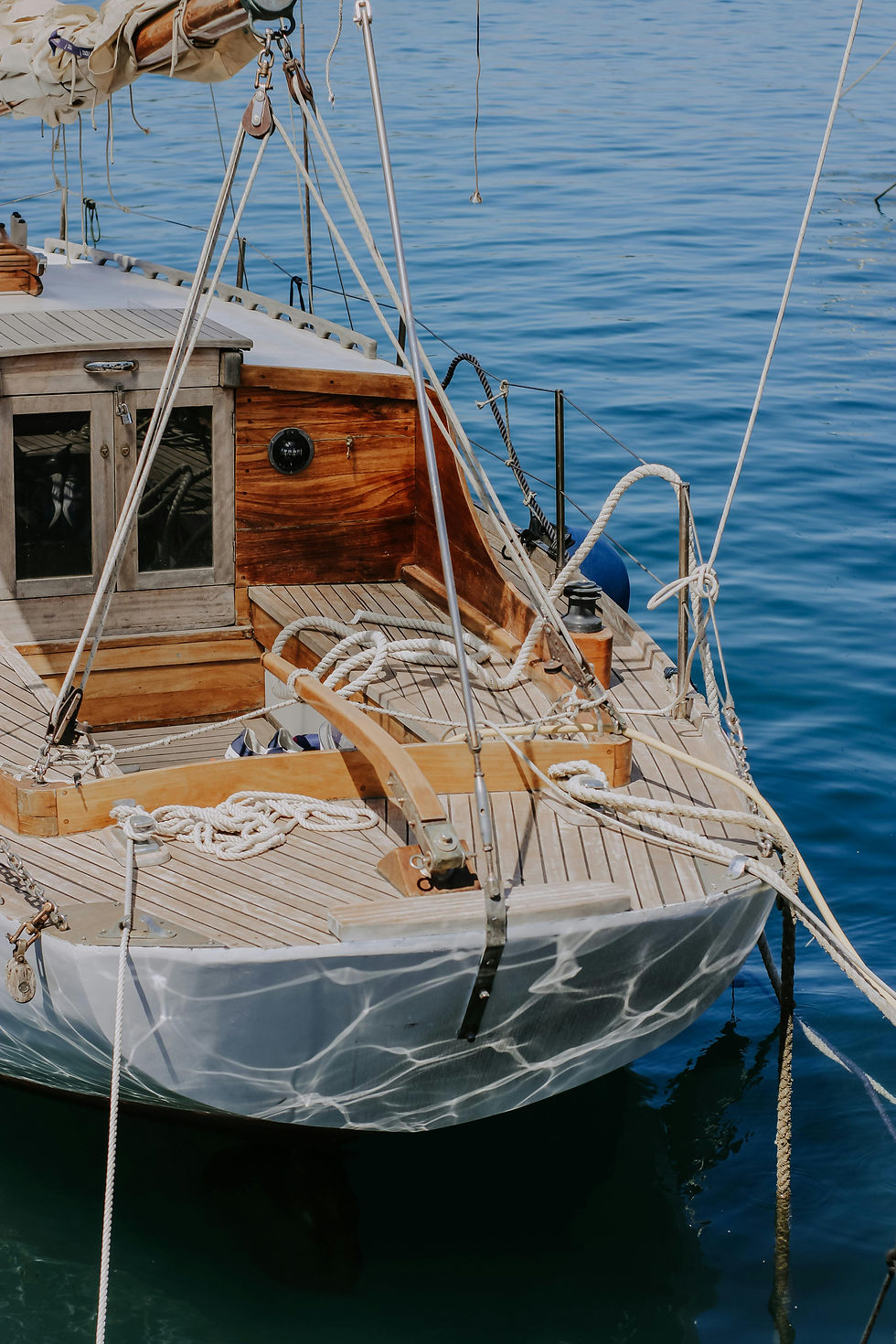How to Prepare for a Round-the-World Yacht Voyage
- Max Kowalsky

- Aug 10
- 7 min read
Embarking on a round-the-world yacht voyage is a thrilling adventure. It promises breathtaking views and unforgettable experiences. But such a journey requires meticulous preparation. Planning a circumnavigation involves more than just setting sail. It demands careful consideration of various factors. From choosing the right yacht to understanding global weather patterns, every detail matters.
Safety is paramount on the open seas. Equipping your yacht with essential safety gear is crucial. Regular maintenance and equipment checks ensure a smooth voyage.
Financial and logistical planning are equally important. Budgeting for the trip and understanding legal requirements can prevent unexpected hurdles.
This guide will help you navigate the complexities of a global yacht voyage. Prepare thoroughly to enjoy a safe and successful adventure.
Understanding the Scope of Circumnavigation
Embarking on a round-the-world yacht voyage is a grand undertaking. It’s more than just sailing from point A to point B. This journey covers vast oceans and requires crossing multiple continents.
Comprehending the full scope of circumnavigation is essential. It involves understanding ocean currents, diverse climates, and seasonal weather changes. Each of these elements can significantly impact your journey.
The route you choose should be thoughtfully planned. Consider international maritime laws, entry requirements for each country, and the availability of safe harbors. Carefully research each region you plan to visit.
Key elements to consider for circumnavigation planning include:
Analyzing the best seasonal windows for specific regions.
Understanding local maritime laws and customs regulations.
Recognizing potential geopolitical or security risks.
Each of these factors contributes to a successful voyage. The more knowledge you gather, the better you can prepare. This understanding forms the foundation of a safe and rewarding global sailing adventure.

Choosing and Outfitting the Right Yacht
Selecting the right yacht is crucial for a successful circumnavigation. The vessel should be sturdy, reliable, and designed for long voyages. Consider factors such as size, maintenance requirements, and the number of crew onboard.
Opt for a yacht with a proven track record in ocean cruising. Look for hull designs that perform well in various sea conditions. It’s important to choose a yacht with adequate storage for provisions and equipment.
Outfitting the yacht involves equipping it with essential gear. This includes navigation instruments, communication devices, and safety equipment. Each piece must be reliable and suited for the demands of ocean sailing.
When outfitting your yacht, consider the following essentials:
High-quality navigational tools like GPS and charts.
Durable sails suited for varying wind conditions.
Sufficient provisioning space for food and water.
Updated safety gear, including EPIRBs and life rafts.
Consult with experienced sailors and yacht brokers. Their expertise can guide your decisions in both choosing and outfitting your yacht. This collaborative approach ensures your vessel is ready for the challenges of a round-the-world journey.
Essential Skills, Training, and Certifications
Before embarking on a round-the-world yacht voyage, it's vital to acquire the necessary skills. Training enhances both safety and enjoyment during the journey. Courses for navigation, seamanship, and emergency procedures are essential.
Sailing certifications are often prerequisites for insurance and participating in certain events. These certifications validate your competence as a sailor. They cover topics like radio operation, first aid, and weather forecasting.
Developing these skills prepares you for various situations you may encounter at sea. Consider the following training:
Basic navigation and piloting skills
Certified first aid and CPR courses
Proficiency in radio communication
Training in weather pattern analysis
Participating in hands-on workshops and seminars can boost confidence. Sailors find practical experience invaluable when facing real maritime challenges. It's also a good idea to engage with seasoned sailors for mentorship and advice.
Route Planning and Weather Considerations
Effective route planning is crucial for a successful circumnavigation. It involves more than just selecting destinations. Understanding seasonal weather patterns can make the difference between smooth sailing and dangerous encounters.
Considering ocean currents and prevailing winds helps optimize your journey. It can conserve resources and reduce travel time. Carefully selecting your path ensures safer passages and improved overall efficiency.
Weather considerations are integral to route planning. Anticipating seasonal storms or cyclones is necessary. Using weather forecasting tools and consulting with a weather router can provide critical insights.
When planning your route, keep these in mind:
Understand global weather patterns
Analyze ocean currents for efficiency
Anticipate seasonal weather hazards
Use technology for updated forecasts
Selecting safe harbors and suitable stopping points for rest is imperative. This allows you to avoid fatigue and conduct necessary yacht maintenance. Being prepared and flexible ensures you're ready to adapt to unforeseen conditions at sea.

Safety Equipment and Emergency Preparedness
Safety is paramount when embarking on a round-the-world yacht voyage. Proper safety equipment and emergency protocols are essential components of your preparation. Equipping your yacht with all necessary tools can save lives.
Begin with a thorough inspection of life-saving gear. This should include life rafts, emergency position-indicating radio beacons (EPIRBs), and distress flares. Regular checks and maintenance on these items are essential.
Preparing for emergencies goes beyond having equipment. Crew members must understand procedures and practice drills. Everyone on board should know how to respond promptly to various scenarios.
Key safety items and emergency tips include:
Regularly inspect life rafts and EPIRBs
Ensure all crew know emergency protocols
Conduct frequent safety drills
The benefits of preparedness cannot be overstated. In emergencies, having well-rehearsed plans and functioning equipment can make a critical difference. Staying vigilant and prepared will ensure a safer journey for all aboard.
Yacht Maintenance and Technical Readiness
Maintaining your yacht is crucial for a successful circumnavigation. Before setting sail, conduct a comprehensive inspection of your vessel. Every system should be in top condition to handle the demands of global travel.
Pay attention to critical components. This includes the engine, sails, and hull integrity. Regular maintenance schedules should be established and adhered to diligently.
Here is a checklist to aid in technical readiness:
Inspect and service the engine regularly
Check and repair sails and rigging
Ensure the hull is clean and free of damage
Documentation is also key. Maintain detailed records of all maintenance and repairs. This log will help identify patterns and anticipate future needs. Prioritizing yacht upkeep ensures a smoother, safer journey around the world.
Provisioning and Life Onboard
Effective provisioning is fundamental for a long sailing trip. Plan your supplies meticulously, considering your route and possible port stops. This preparation ensures that you are well-stocked without unnecessary excess.
Create a detailed provisioning list covering all essential items. Account for food, water, and personal items. Don't forget to include necessary medical supplies and spare parts.
Here's a basic provisioning checklist:
Long-lasting food and snacks
Freshwater and purification tablets
Spare parts for critical systems
Medical kit and common medications
Daily life aboard a yacht should balance work and rest. Establish routines for cooking, cleaning, and leisure. These routines help maintain morale and ensure each day is productive and enjoyable.

Crew Management and Well-being
Managing crew dynamics is vital for a harmonious journey. Clear roles and regular communication keep everyone aligned. Regular meetings ensure all voices are heard.
Foster a supportive atmosphere where crew well-being is a priority. Encourage breaks and shared leisure activities. This helps to reduce stress and build camaraderie.
Consider these key factors for managing crew well-being:
Assign clear responsibilities to each crew member
Encourage open communication for feedback
Plan social activities for bonding and morale
Balancing work and leisure enhances crew morale and performance. A cohesive team can better handle the challenges of a long voyage.
Legal, Financial, and Logistical Planning
When planning a round-the-world yacht voyage, addressing legal matters is crucial. Understand the visa requirements for each port. Be aware of customs regulations to avoid any legal hiccups.
Financial planning is another major concern. Budget for unexpected repairs, fuel, and provisioning needs. Keep a financial cushion for emergencies that may arise.
Efficient logistical planning ensures a smoother journey. Chart your route with consideration for safe harbors and provisioning stops. Create a schedule, but remain adaptable to changes.
Key considerations include:
Research visa requirements and customs regulations
Set a realistic budget with a contingency fund
Plan logistics with detailed routes and flexible timelines
By focusing on these plans, you prepare for potential challenges and ensure your voyage runs smoothly. Keeping everything organized helps maintain peace of mind throughout the trip.
Environmental and Cultural Considerations
Sailing around the world offers a unique opportunity to witness diverse ecosystems. It is essential to engage in sustainable sailing practices to protect these environments. Consider using renewable energy sources like solar panels onboard. Reducing waste and recycling can also make a significant impact.
Interacting with diverse cultures enriches your journey. Respecting local customs and being culturally sensitive helps foster positive experiences. Learn about local traditions before arriving at new ports to engage meaningfully.
Key actions include:
Adopt sustainable sailing practices and reduce waste
Use renewable energy sources whenever possible
Respect and learn local customs and traditions
By balancing environmental responsibility with cultural appreciation, you ensure a respectful and positive impact everywhere your voyage takes you.

Leveraging Technology and Support Networks
Technology plays a crucial role in modern yachting. Use advanced navigation tools and apps to track your progress and weather patterns. Communication devices, like satellite phones, keep you connected with loved ones and support teams.
Establishing a reliable support network is invaluable. Engage with sailing communities for advice and emergency assistance. These networks provide camaraderie and shared knowledge, enhancing your voyage experience.
Key considerations include:
Utilize navigation and communication technology
Join sailing communities and support networks
Seek advice and assistance from experienced sailors
Embracing technology and building strong support networks ensures a smoother and safer voyage across the globe.
Final Tips for a Successful Global Yacht Voyage
Embarking on a round-the-world yacht voyage is both thrilling and demanding. Preparation and adaptability are your greatest allies. Embrace every challenge as a learning opportunity. Celebrate milestones, both big and small, to maintain morale.
To ensure success, keep these final tips in mind:
Stay flexible and adaptable
Document your journey meticulously
Keep a positive and resilient mindset
Remember, the experience is as rewarding as reaching your destination. Appreciate every moment, and it will become a voyage of a lifetime.
.png)





Comments